‘The Donald’ is Trumped by Most of GOP Field
Billionaire businessman Donald Trump entered the Republican presidential race this week, but GOP voters rate him near the bottom of the crowded field.

Billionaire businessman Donald Trump entered the Republican presidential race this week, but GOP voters rate him near the bottom of the crowded field.

Even as the Republican presidential field continues to grow, most voters say that they want all presidential candidates to appear in their party’s upcoming debates.

Former Florida Governor Jeb Bush’s entry into the Republican presidential field comes with a burden that the other candidates don’t face: his surname.
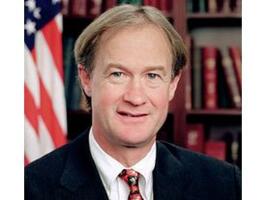
Lincoln Chafee who held statewide office in Rhode Island both as a Republican and as an Independent has an uphill battle in his bid to become the Democratic Party’s presidential nominee. For starters, he needs to help voters in his own party get to know him better.
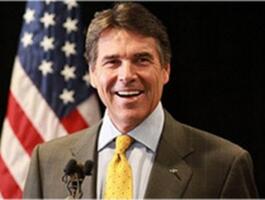
Rick Perry who recently stepped down as the longtime governor of Texas is running again for the Republican presidential nomination, and GOP voters see him just behind the pack of early front-runners.
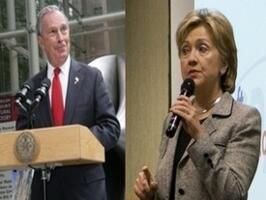
Some pundits have suggested that liberal darling Michael Bloomberg, the former mayor of New York City, should jump into the race for the Democratic presidential nomination, but is he really a threat to frontrunner Hillary Clinton?
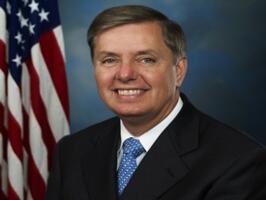
Longtime Senator Lindsey Graham has entered the sea of candidates seeking the Republican presidential nomination, but GOP voters rate the South Carolinian the longest of the long-shots in the race so far.
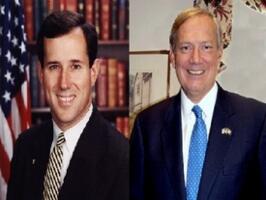
Former New York Governor George Pataki and Rick Santorum, the one-time Pennsylvania senator who came up short in the 2012 presidential contest, have joined the crowded Republican race for 2016, but GOP voters think they have little chance of capturing their party's presidential nomination.
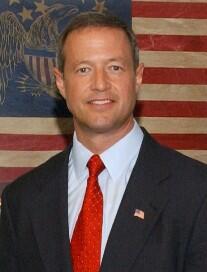
Former Maryland Governor Martin O’Malley is an even bigger unknown to members of his own party than Vermont Senator Bernie Sanders, but both men have a steep hill to climb if they’re going to take next year’s Democratic presidential nomination away from Hillary Clinton.

There’s still a ways to go before Election Day 2016, but most voters – especially Republicans – think a GOP victory is likely.
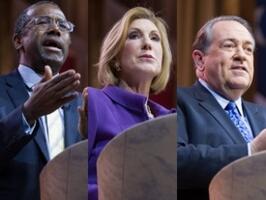
Republicans think Mike Huckabee has the best chance of getting the GOP presidential nomination of the three new contenders in the race this week, but then he’s the best-known of the trio.
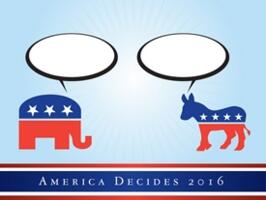
The 2016 presidential race has its first self-described socialist candidate now that longtime Vermont Senator Bernie Sanders is running for the Democratic nomination, but most voters see this political label as toxic.

The New York Times reports in their latest poll released late yesterday that Americans don’t care about Hillary Clinton’s e-mail and Clinton Foundation problems. They conclude that the former secretary of State and putative Democratic presidential nominee in 2016 has weathered the storm so far.
For Democrats, it’s always advantageous when pollsters turn to Americans in general or even registered voters rather than Likely Voters like those we routinely survey here at Rasmussen Reports. It’s true that Republicans are more likely than Democrats to say they intend to vote which helps explain why Democrats are always championing schemes like same-day voter registration, mail-in voting and the like to get their voters to the polls. But, historically, we’ve also found that polling likely voters gets us closer to the actual end result than surveying Americans as a whole.
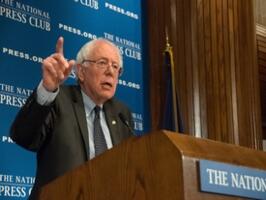
Bernie Sanders has some work to do if he wants to be the next Democratic nominee for president of the United States.
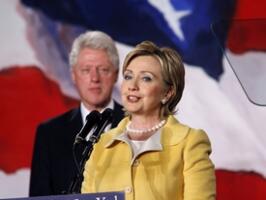
Voters are less convinced that Bill Clinton will be a plus for his wife’s bid for the White House.
A new Rasmussen Reports national telephone survey finds that 46% of Likely U.S. Voters think the former president will help Hillary Clinton’s run next year. That’s down from 54% a year ago. Twenty-one percent (21%) now think he will hurt her candidacy, up eight points from last year, while just has many (22%) say he’ll have no impact. (To see survey question wording, click here.)
(Want a free daily e-mail update? If it's in the news, it's in our polls). Rasmussen Reports updates are also available on Twitter or Facebook.
The survey of 1,000 Likely Voters was conducted on April 13-14, 2015 by Rasmussen Reports. The margin of sampling error is +/- 3 percentage points with a 95% level of confidence. Field work for all Rasmussen Reports surveys is conducted by Pulse Opinion Research, LLC. See methodology.
Additional information from this survey and a full demographic breakdown are available to Platinum Members only.
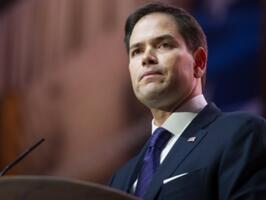
Senator Marco Rubio is the third Republican to officially announce his candidacy for president, and GOP voters think he has about the same shot as his announced rivals to win the party’s nomination. (To see survey question wording, click here.)
(Want a free daily e-mail update? If it's in the news, it's in our polls). Rasmussen Reports updates are also available on Twitter or Facebook.
The survey of 1,000 Likely Voters was conducted on April 13-14, 2015 by Rasmussen Reports. The margin of sampling error is +/- 3.5 percentage points with a 95% level of confidence. Field work for all Rasmussen Reports surveys is conducted by Pulse Opinion Research, LLC. See methodology.
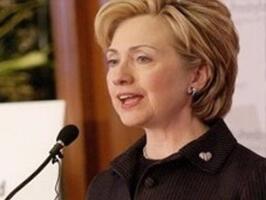
Most voters think Hillary Clinton will be the next president of the United States even though they have very mixed feelings about her. (To see survey question wording, click here.)
(Want a free daily e-mail update? If it's in the news, it's in our polls). Rasmussen Reports updates are also available on Twitter or Facebook.
The survey of 1,000 Likely Voters was conducted on April 13-14, 2015 by Rasmussen Reports. The margin of sampling error is +/- 3 percentage points with a 95% level of confidence. Field work for all Rasmussen Reports surveys is conducted by Pulse Opinion Research, LLC. See methodology.

Hillary Clinton, now officially a candidate for president in 2016, leads the first two announced candidates for the Republican nomination but earns less than 50% support at this early stage.
(To see survey question wording, click here.)
(Want a free daily e-mail update? If it's in the news, it's in our polls). Rasmussen Reports updates are also available on Twitter or Facebook.
The survey of 1,000 Likely Voters was conducted on April 9 & 12, 2015 by Rasmussen Reports. The margin of sampling error is +/- 3 percentage points with a 95% level of confidence. Field work for all Rasmussen Reports surveys is conducted by Pulse Opinion Research, LLC. See methodology.

Republican voters rate Rand Paul’s chances of getting the GOP presidential nomination as about the same as Ted Cruz’s at this early stage of the game. (To see survey question wording, click here.)
[Have we heard from you yet? The 2015 Rasmussen Reports reader survey is the most important poll we’ll take all year. Take the survey now.]
(Want a free daily e-mail update? If it's in the news, it's in our polls). Rasmussen Reports updates are also available on Twitter or Facebook.
The survey of 1,000 Likely Voters was conducted on April 7-8, 2015 by Rasmussen Reports. The margin of sampling error is +/- 3 percentage points with a 95% level of confidence. Field work for all Rasmussen Reports surveys is conducted by Pulse Opinion Research, LLC. See methodology.
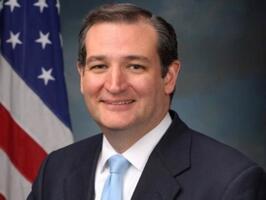
Ted Cruz, the junior U.S. senator from Texas, is the first official Republican candidate for president, but GOP voters are almost evenly divided this early out whether he’ll be their party’s nominee in 2016. (To see survey question wording, click here.)
(Want a free daily e-mail update? If it's in the news, it's in our polls). Rasmussen Reports updates are also available on Twitter or Facebook.
The survey of 1,000 Likely Voters was conducted on March 24-25, 2015 by Rasmussen Reports. The margin of sampling error is +/- 3 percentage points with a 95% level of confidence. Field work for all Rasmussen Reports surveys is conducted by Pulse Opinion Research, LLC. See methodology.